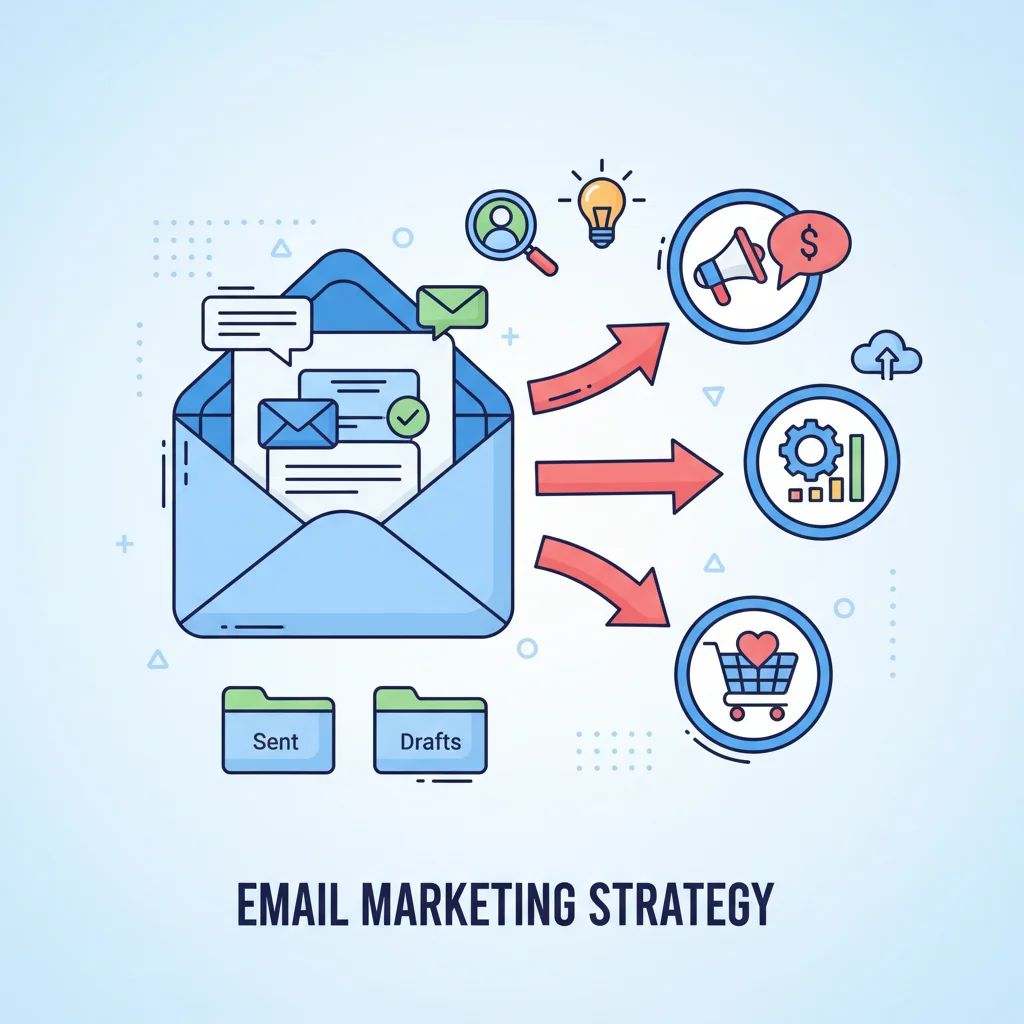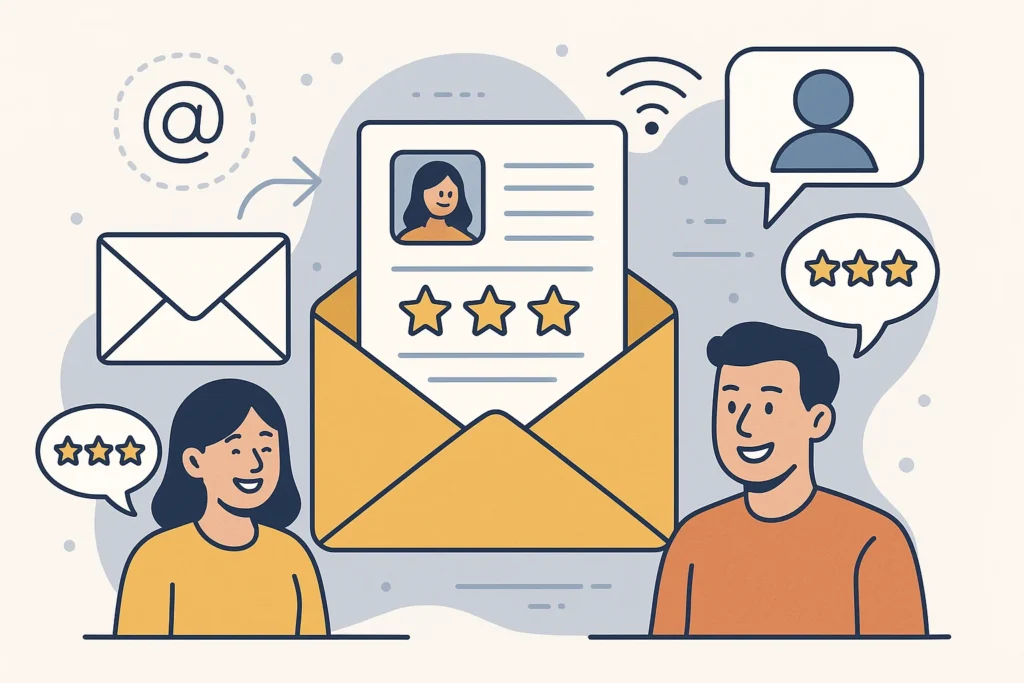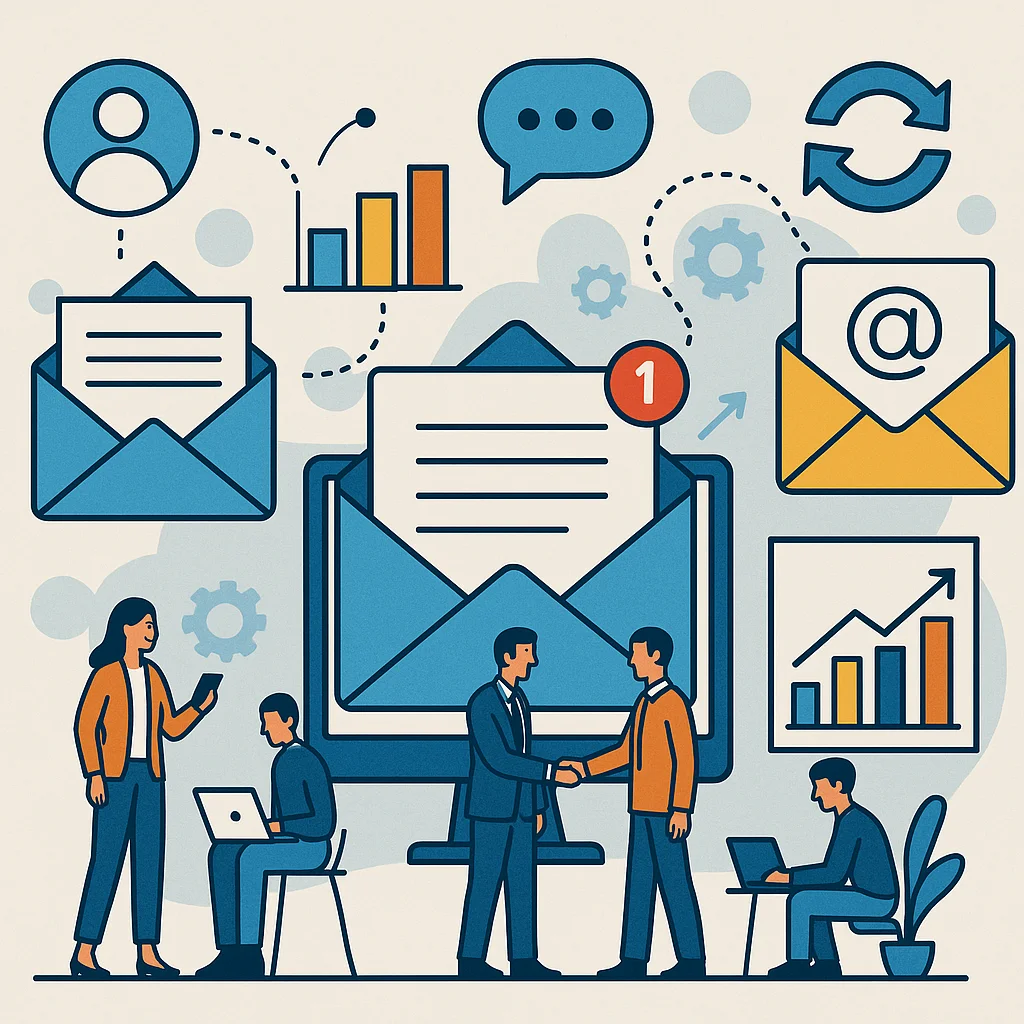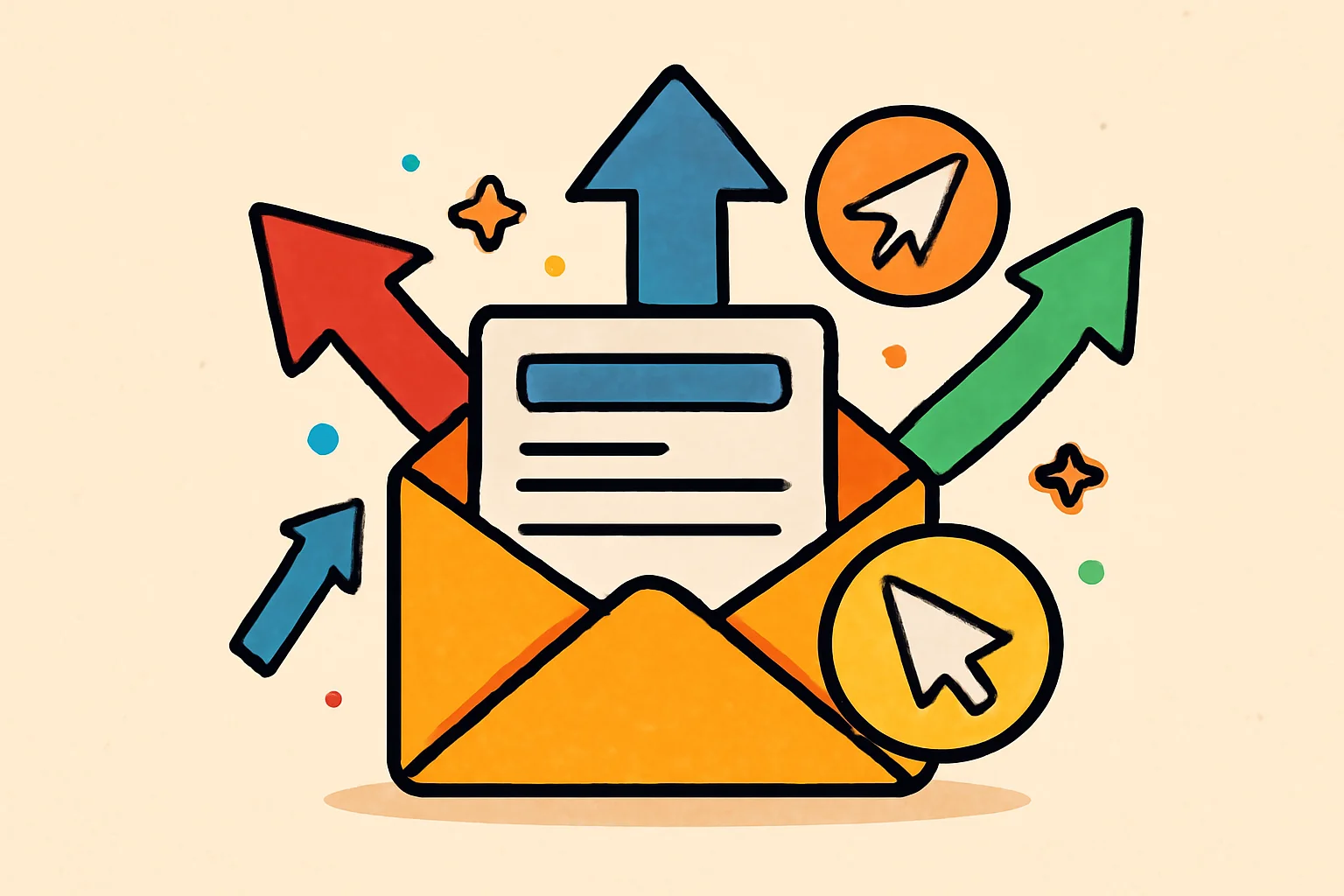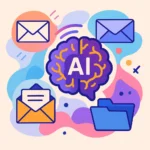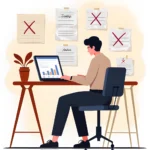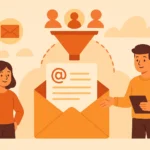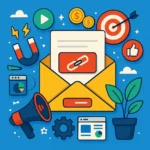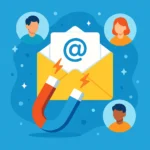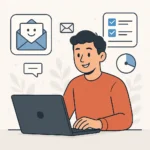Now Reading: 6 Effective Email Marketing Automation Workflows You Need Now
-
01
6 Effective Email Marketing Automation Workflows You Need Now
6 Effective Email Marketing Automation Workflows You Need Now

Did you know that automated emails generate 320% more revenue than non-automated emails? That’s not a typo. When I discovered this stat, I immediately revamped my entire email strategy. Effective email marketing automation workflows aren’t just convenient-they’re essential for businesses that want to stay competitive in today’s digital landscape.
Key Takeaways
The most effective email marketing automation workflows include:
- Welcome sequences that introduce your brand and set expectations for new subscribers
- Abandoned cart workflows that recover potential lost sales with timely reminders
- Lead nurturing sequences that guide prospects through your sales funnel with valuable content
- Re-engagement campaigns that win back inactive subscribers before they’re gone for good
- Post-purchase workflows that enhance customer experience and encourage repeat business
- Event-based sequences that provide timely, relevant communication based on user actions
These automated workflows save time, improve customer experience, and significantly boost conversion rates when properly implemented.
Welcome Email Sequence
The welcome sequence is the foundation of effective email marketing automation workflows. When someone joins your list, you have their peak attention-don’t waste it!
A strong welcome sequence should:
- Deliver on whatever promise got them to subscribe
- Introduce your brand personality and values
- Set clear expectations about what they’ll receive
- Guide them toward their next logical action
Here’s a simple structure that works across industries:
- Immediate welcome: Thank them, deliver any promised lead magnet, and set expectations
- Day 2: Share your brand story and mission (why should they care about you?)
- Day 4: Provide unexpected value (a tip, resource, or insight they weren’t expecting)
- Day 6: Introduce your products/services and how they solve specific problems
- Day 8: Present a low-friction offer to convert them from subscriber to customer
One ecommerce brand I worked with saw a 104% increase in first-time purchases after implementing this exact welcome sequence structure.
Useful Articles:
Abandoned Cart Recovery Workflow
Cart abandonment is the heartbreak of ecommerce-so close to a sale, yet so far! An effective abandoned cart workflow can recover between 10-30% of these lost sales.
The most effective sequence typically includes:
- 1 hour after abandonment: “Did you forget something?” reminder with product images
- 24 hours later: Address common objections (shipping costs, return policy, etc.)
- 48 hours later: Create urgency with a time-limited discount or bonus
Pro tip: Include customer reviews of the abandoned products in your second or third email. Social proof is incredibly powerful for overcoming purchase hesitation.
Lead Nurturing Workflow
Not everyone is ready to buy immediately. Lead nurturing workflows keep you top-of-mind and gradually build trust until prospects are ready to convert.
The structure depends on your sales cycle, but generally follows this pattern:
- Educational content: Help them understand their problem better
- Solution awareness: Introduce different approaches to solving the problem
- Product introduction: Show how your specific solution works
- Case studies: Demonstrate success with similar customers
- Offer: Present your product/service with a compelling call-to-action
The key to effective lead nurturing is segmentation. Different leads have different needs, interests, and objections. The more you can tailor your nurturing sequence to specific segments, the higher your conversion rate will be.
Useful Articles:
Re-engagement Workflow
List decay is inevitable-people change emails, interests shift, or they simply stop opening your messages. A re-engagement workflow helps you win back these subscribers before they’re gone for good.
An effective re-engagement sequence might look like:
- We miss you: Acknowledge their absence and express genuine desire to reconnect
- Value reminder: Highlight what they’re missing (new content, features, etc.)
- Feedback request: Ask why they’ve disengaged (with a simple survey)
- Special offer: Provide an incentive to re-engage
- Last chance: Clear warning that they’ll be removed from your list (creates urgency)
One SaaS company I consulted with recovered 23% of their inactive subscribers using this exact sequence, generating significant additional revenue from people who were essentially lost.
Post-Purchase Workflow
The sale isn’t the end-it’s the beginning of a relationship. Post-purchase workflows help ensure customer satisfaction, reduce support inquiries, and set the stage for repeat business.
A basic but effective post-purchase sequence includes:
- Order confirmation: Transaction details and next steps
- Anticipation builder: What to expect, shipping updates, or how to prepare
- Onboarding/usage tips: How to get the most value from their purchase
- Feedback request: Ask for their experience and address any issues
- Cross-sell/upsell: Recommend complementary products based on their purchase
The beauty of post-purchase workflows is that they work on autopilot to enhance customer experience while simultaneously setting up your next sale.
Useful Articles:
Event-Based Workflows
Some of the most effective email marketing automation workflows are triggered by specific user behaviors rather than time-based sequences. These include:
- Product browse abandonment: When someone views products but doesn’t add to cart
- Free trial signup: Guiding users to get value from your trial
- Milestone celebration: Acknowledging anniversaries, birthdays, or usage milestones
- Replenishment reminder: For consumable products that need regular replacement
These event-based workflows feel incredibly timely and relevant to recipients because they’re directly tied to specific actions or moments.
How To Build Your Own Effective Email Marketing Automation Workflows
Now that you know which workflows deliver the biggest impact, let’s talk about how to create them for your business.
Step 1: Set Clear Goals
Before building any workflow, define what success looks like. Are you trying to:
- Convert subscribers to customers?
- Increase repeat purchase rate?
- Reduce customer churn?
- Boost engagement with your content?
Each workflow should have a primary objective that guides your content and structure.
Step 2: Map Your Customer Journey
Effective email marketing automation workflows align with your customer journey. Sketch out the typical path people take from first discovering your brand to becoming loyal customers.
Identify key moments where automated emails could provide value or overcome obstacles. These become your trigger points for different workflows.
Step 3: Choose The Right Automation Platform
Not all email platforms are created equal when it comes to automation capabilities. Look for:
- Visual workflow builders (drag-and-drop interfaces)
- Flexible triggering options (time, behavior, custom fields)
- Robust segmentation capabilities
- A/B testing functionality
- Detailed analytics for optimization
Popular options include Insider, HubSpot, Salesforce, and Snov.io, but choose based on your specific needs and budget.
Step 4: Create Compelling Content
The automation is just the delivery mechanism-your content is what actually drives results. For each email in your workflow:
- Write subject lines that grab attention
- Keep your message focused on a single main point
- Include a clear, compelling call-to-action
- Use conversational language that builds connection
- Incorporate personalization beyond just using their name
Remember that even automated emails should feel personal and human. Nobody wants to feel like they’re talking to a robot.
Step 5: Test Before Launching
Before activating your workflow for your entire list:
- Send test emails to yourself and team members
- Check all links and images
- Verify that conditional logic works correctly
- Test on multiple devices and email clients
A broken automation can damage your brand reputation, so thorough testing is essential.
Advanced Strategies For Email Marketing Automation
Ready to take your workflows to the next level? Here are some advanced tactics that can dramatically improve performance.
Behavioral Segmentation
The most effective email marketing automation workflows use subscriber behavior to determine what content they receive next.
For example, if someone opens your email but doesn’t click, they might need more convincing. If they click but don’t purchase, they’re interested but facing objections. Different behaviors should trigger different follow-up sequences.
Personalization Beyond {{First_Name}}
Basic personalization is expected these days. Advanced personalization includes:
- Product recommendations based on browse history
- Content tailored to industry or role
- Location-specific offers or information
- Communication frequency based on engagement level
One ecommerce client saw a 43% increase in email revenue after implementing browse-based product recommendations in their workflows.
Multi-Channel Integration
The most sophisticated automation workflows don’t stop at email. They coordinate messaging across:
- SMS
- Web push notifications
- In-app messages
- Social media retargeting
This creates a cohesive experience that meets customers wherever they’re most responsive.
Dynamic Content Blocks
Instead of creating separate workflows for each segment, use dynamic content blocks that change based on subscriber attributes or behaviors.
This allows you to maintain fewer workflows while still delivering highly personalized content-a win for both efficiency and effectiveness.
Common Mistakes To Avoid
I’ve seen businesses make the same mistakes with their email marketing automation workflows over and over. Don’t fall into these traps:
Overcomplicating Your Workflows
Start simple. A basic 5-email welcome sequence that works is better than an elaborate 20-step workflow that never gets implemented. You can always add complexity later as you learn what works for your audience.
Neglecting The Human Element
Automation doesn’t mean robotic. Your emails should still sound like they’re written by a human being who cares about the recipient. Use conversational language, acknowledge real emotions, and don’t be afraid to show some personality.
Set-It-And-Forget-It Mentality
Effective email marketing automation workflows require ongoing optimization. Schedule regular reviews to analyze performance and make improvements based on your data.
Sending Too Many Emails
Just because you can automate 15 emails doesn’t mean you should. Respect your subscribers’ inbox and attention. Focus on quality over quantity, and always make sure each email provides genuine value.
Poor Timing And Frequency
Pay attention to the spacing between emails in your workflows. Too frequent, and you’ll annoy subscribers. Too infrequent, and they’ll forget who you are. Test different timing to find the sweet spot for your specific audience.
Getting Started With Your First Workflow
If you’re new to email marketing automation, start with a simple welcome sequence. It’s the easiest to implement and often delivers the quickest results.
Here’s a super simple 3-email welcome sequence you can implement today:
- Welcome and deliver: Send immediately after signup to welcome them and deliver any promised lead magnet
- Value and education: Send 2 days later with useful content related to their interests
- Soft pitch: Send 4 days later introducing your product/service as a solution to their problem
Even this basic sequence will outperform ad hoc, manual emails. Once you’ve got this working, you can expand to the other workflows we’ve discussed.
The most important thing is to start. Perfect is the enemy of done, and even a simple automation workflow will save you time and improve your results compared to manual emails.
Effective email marketing automation workflows aren’t just about technology-they’re about delivering the right message to the right person at the right time. When you nail that combination, magic happens: your subscribers get value, your team saves time, and your business grows.
So what are you waiting for? Your first workflow is just a few clicks away.


